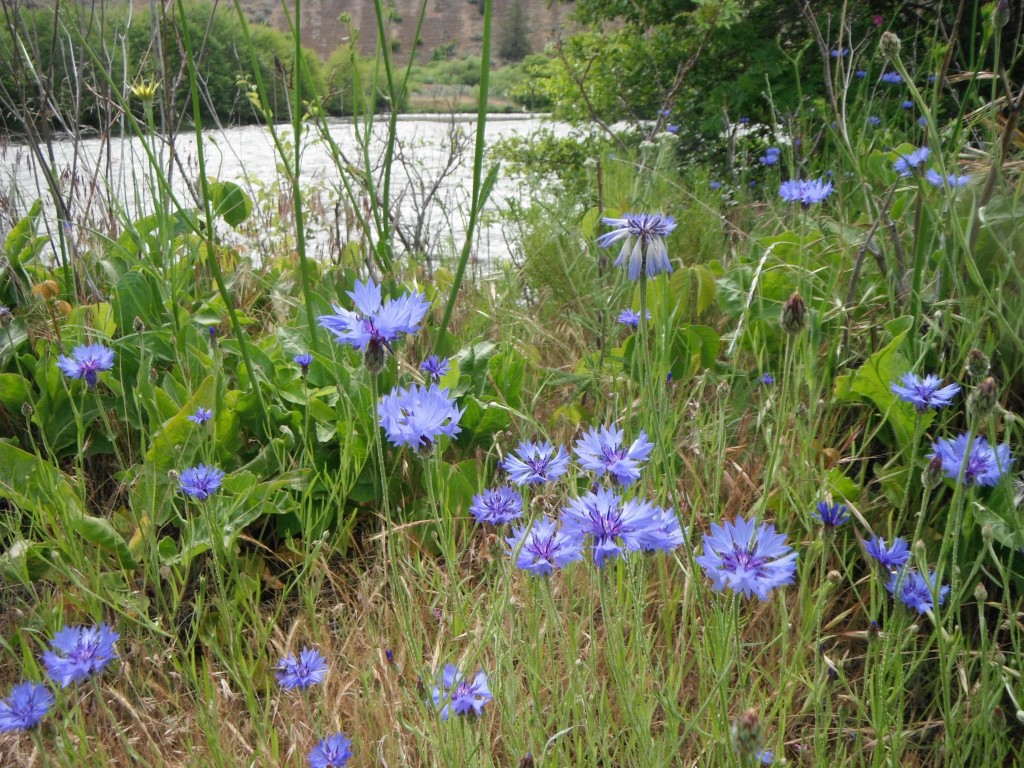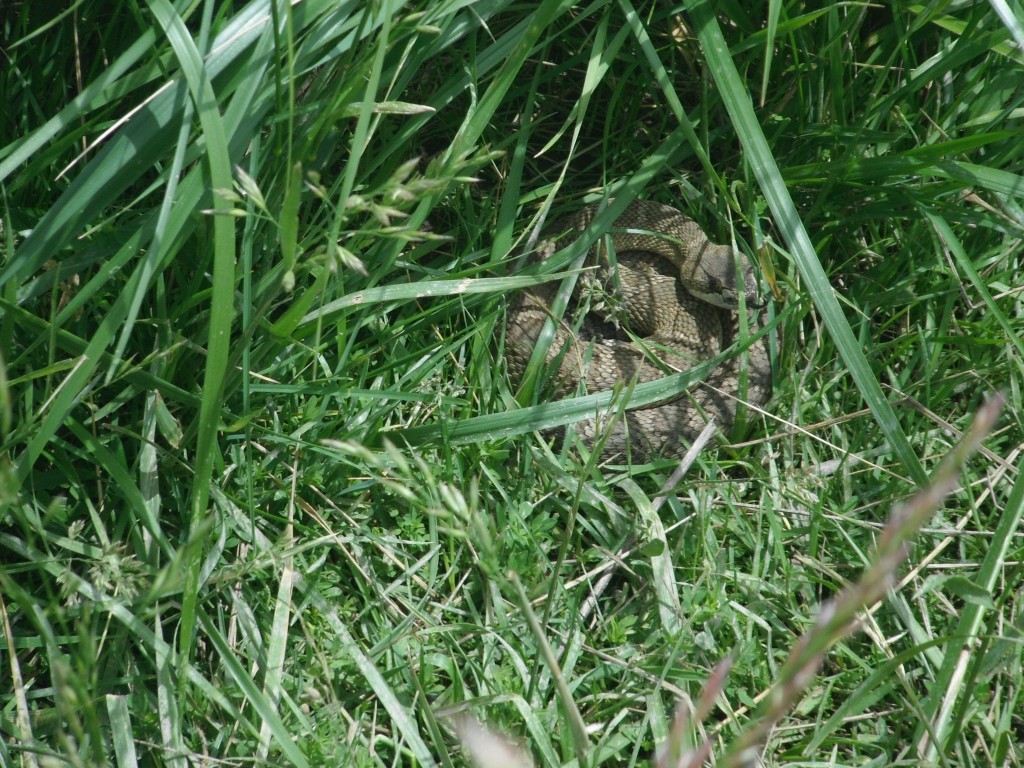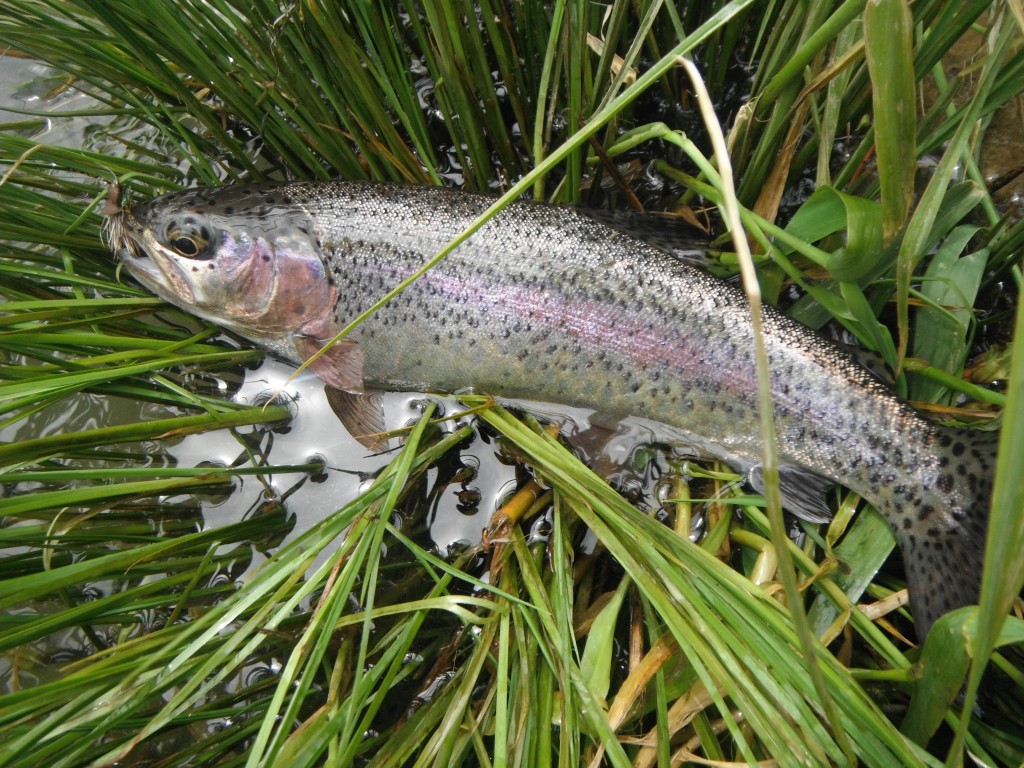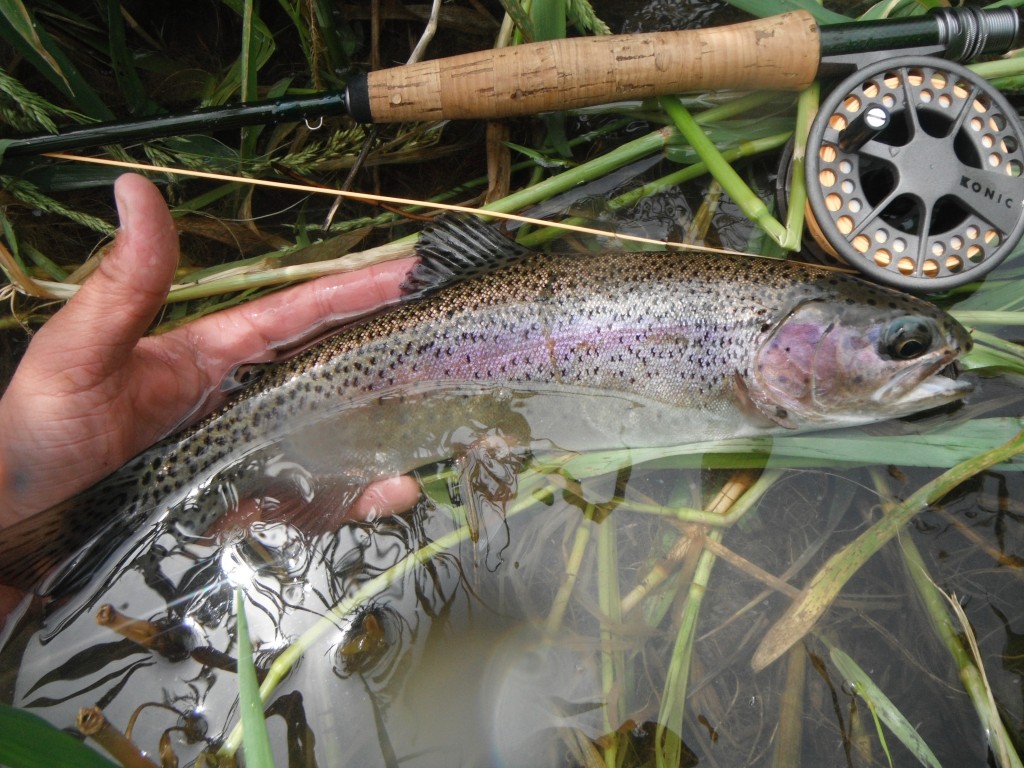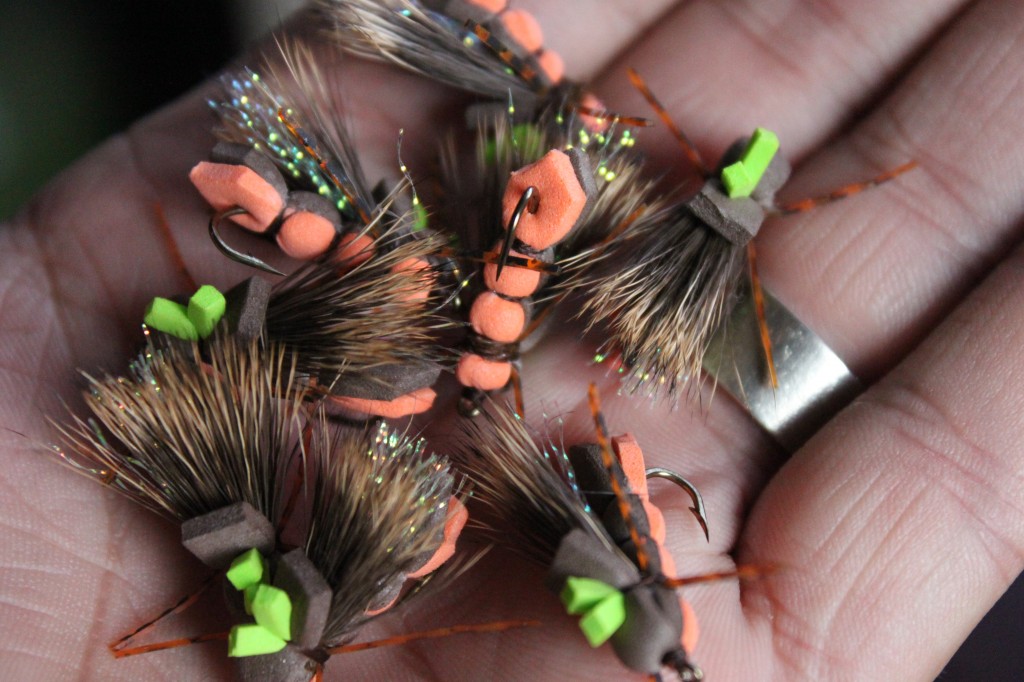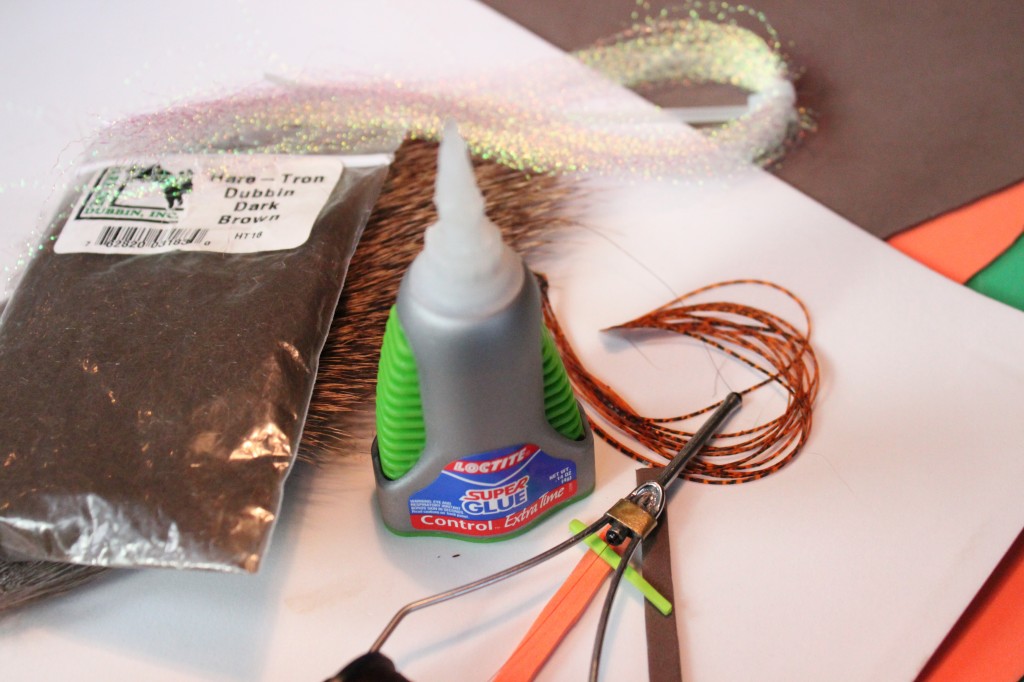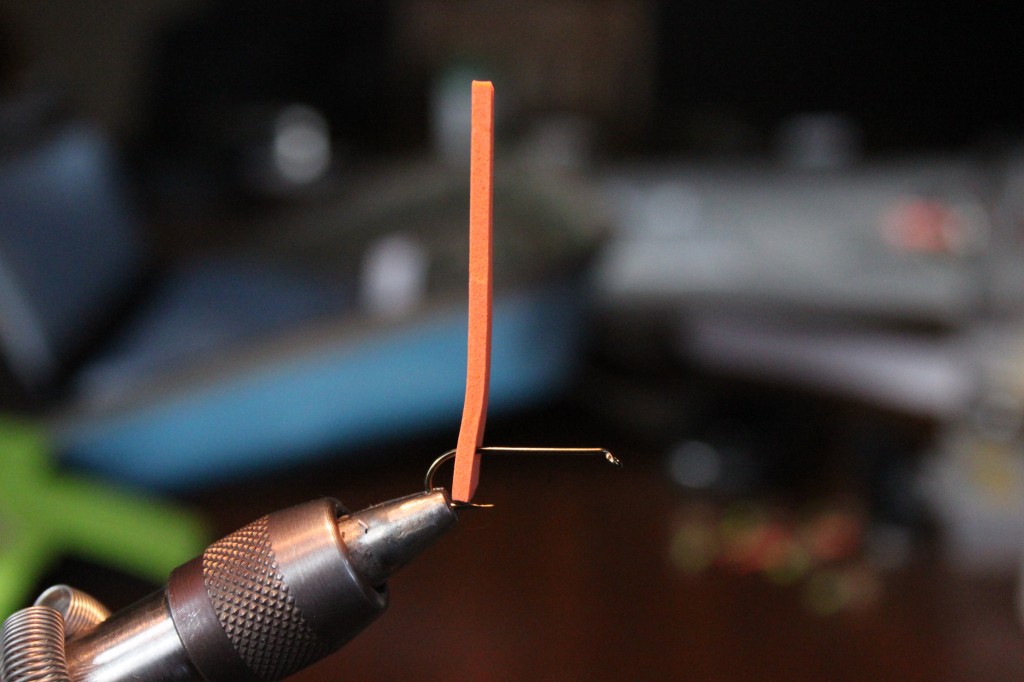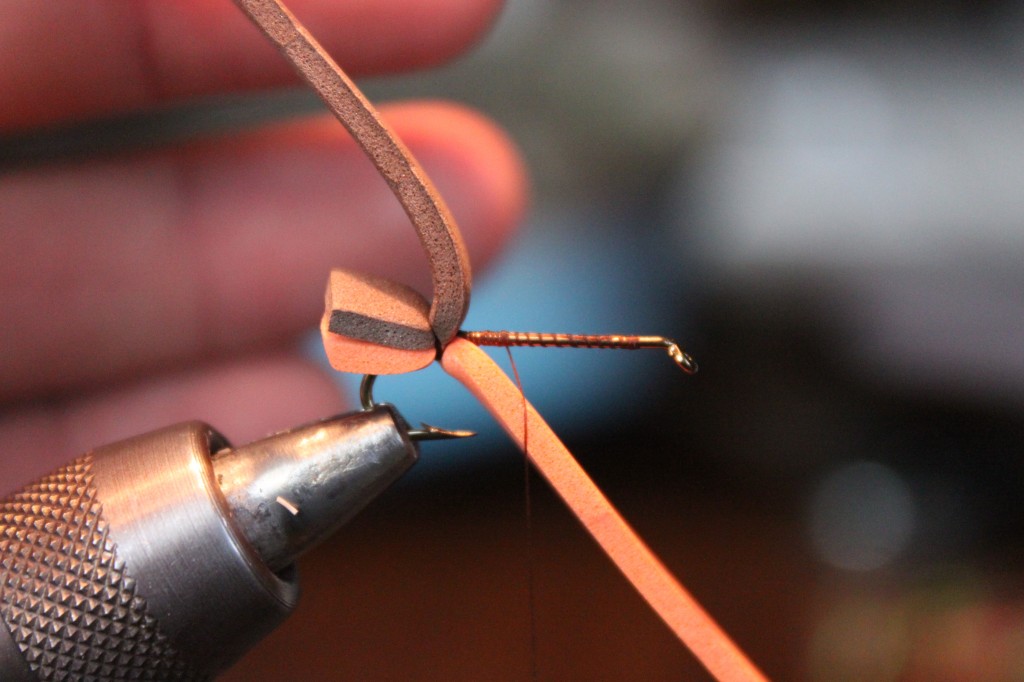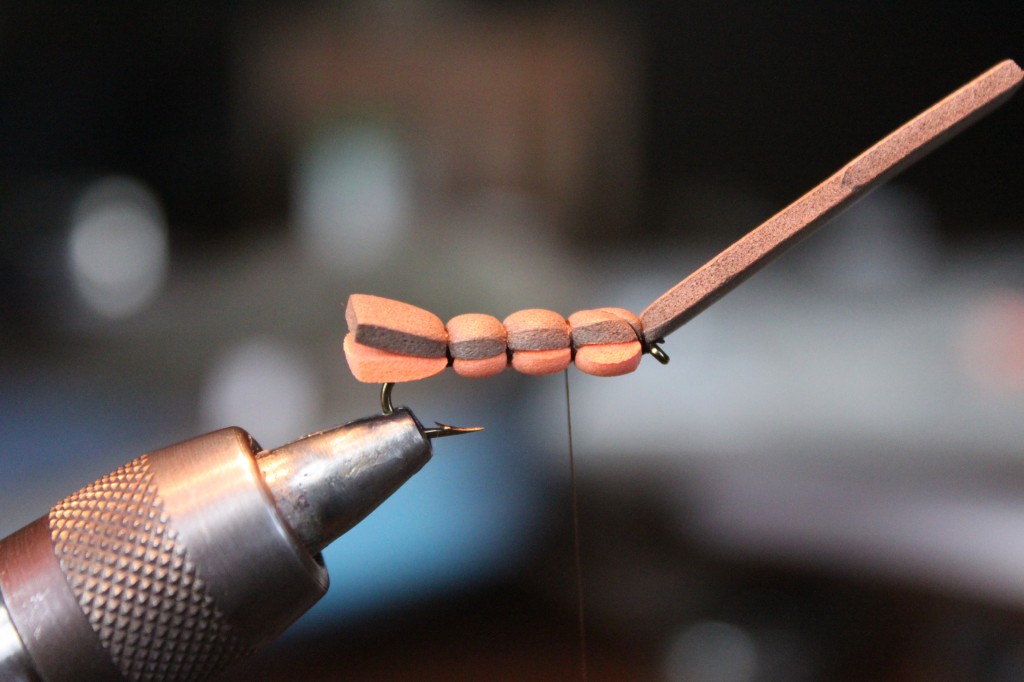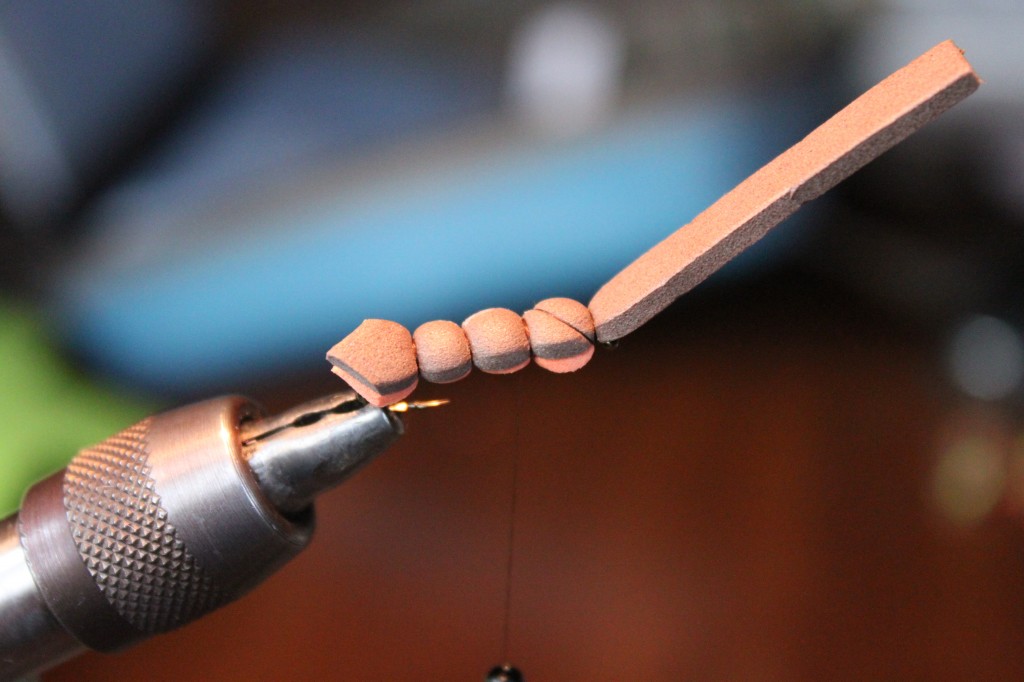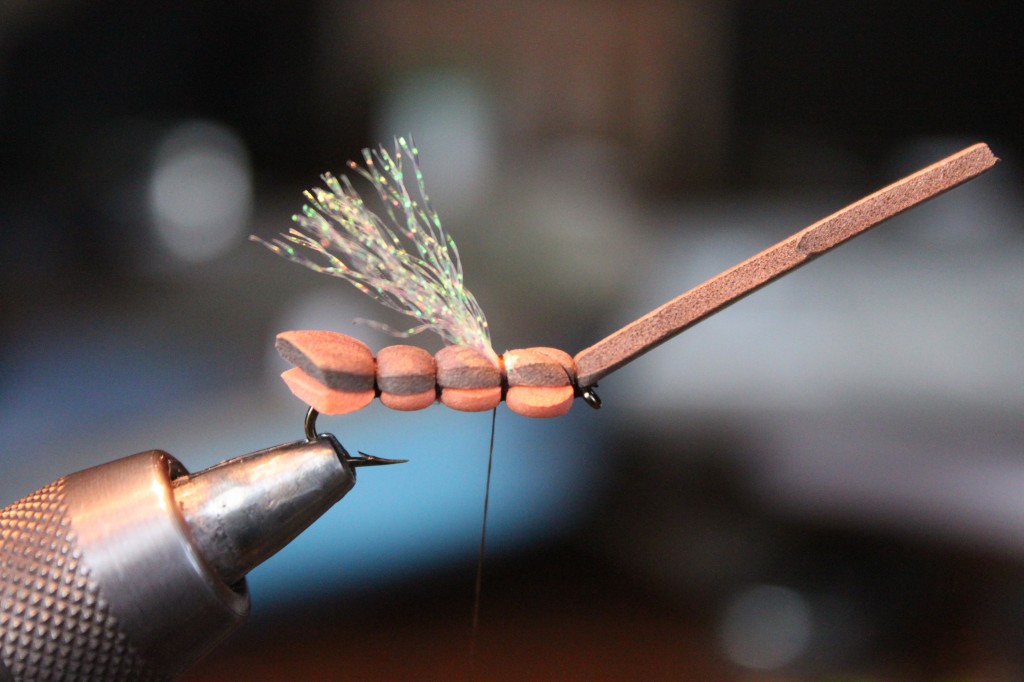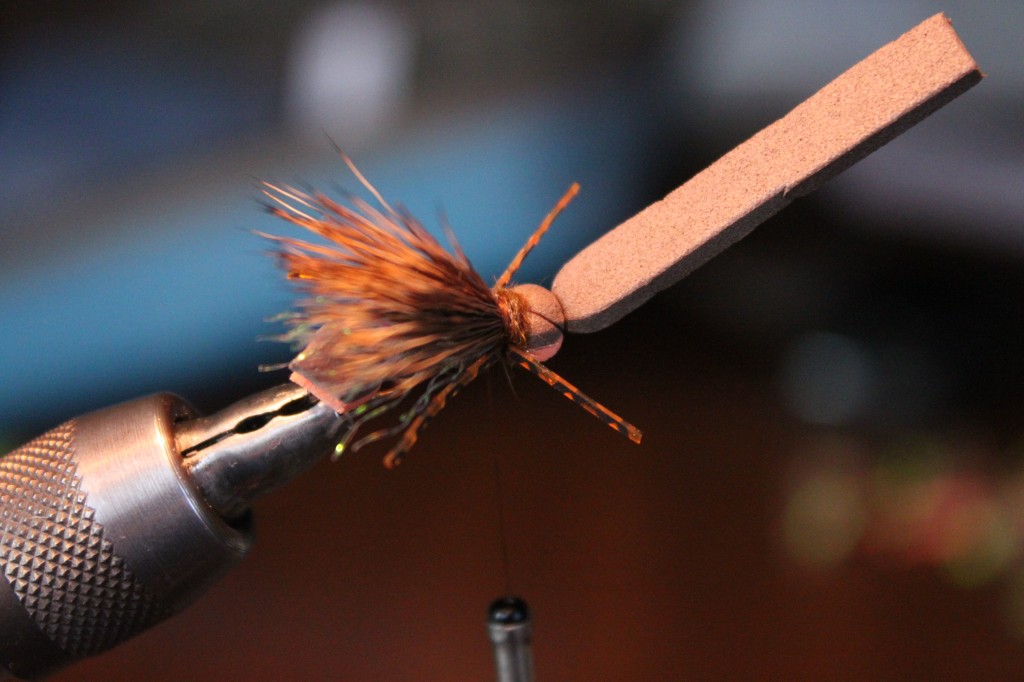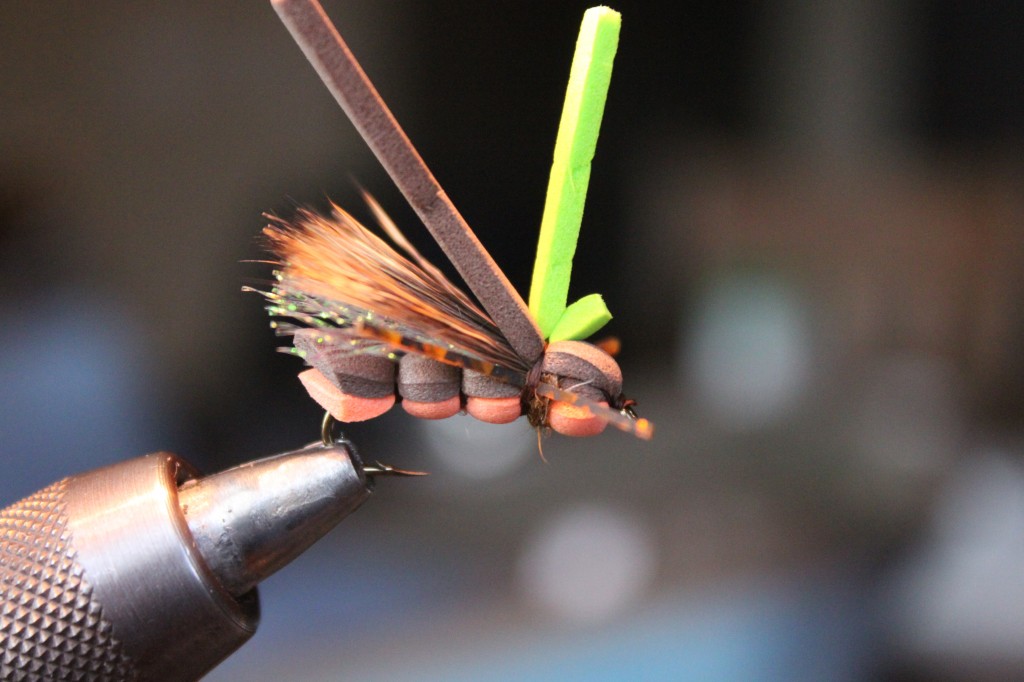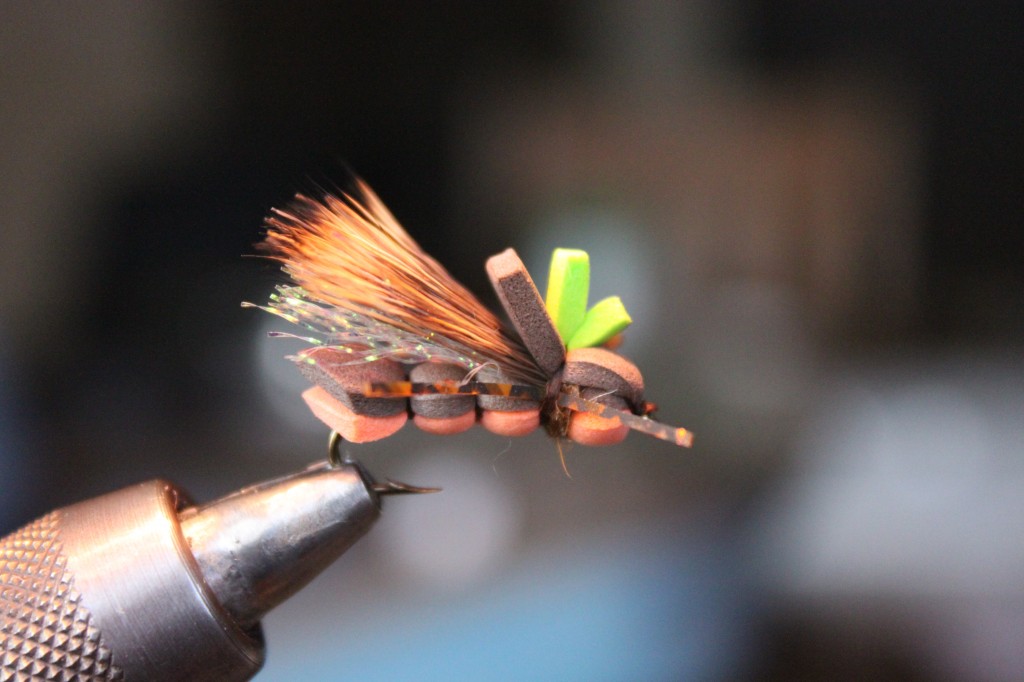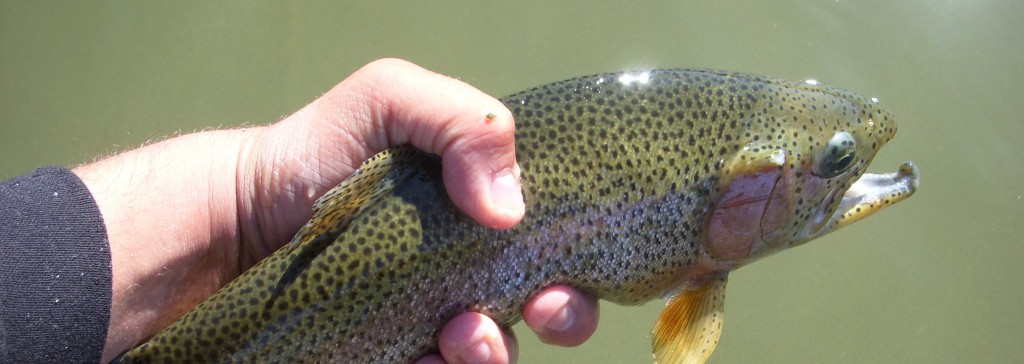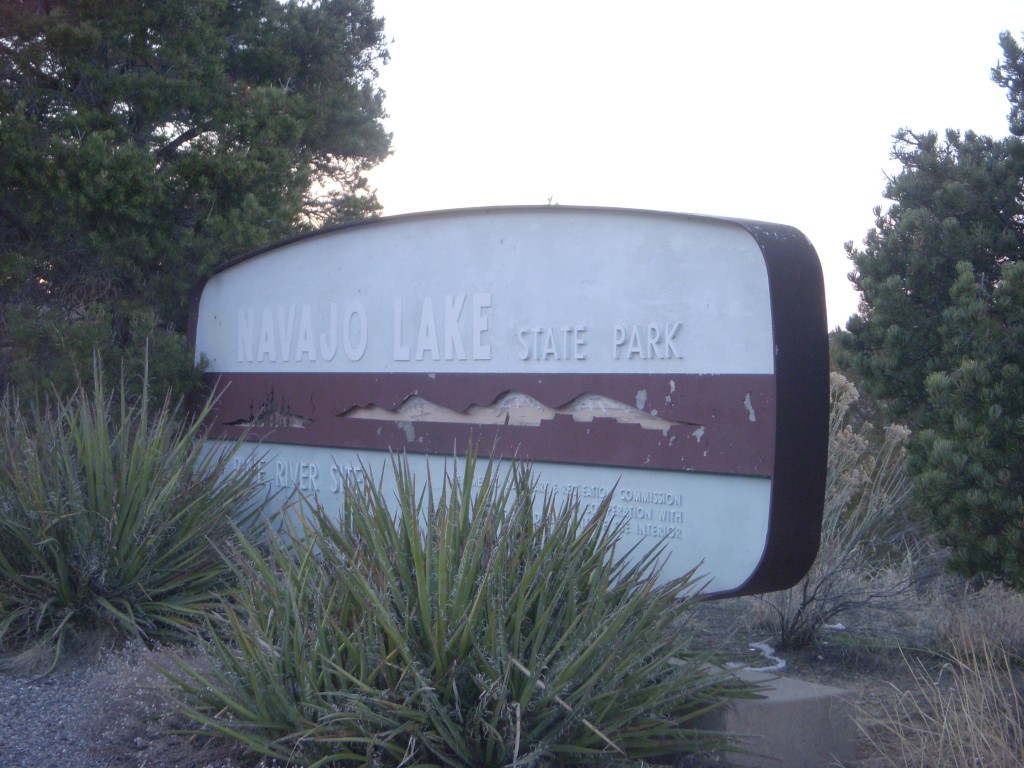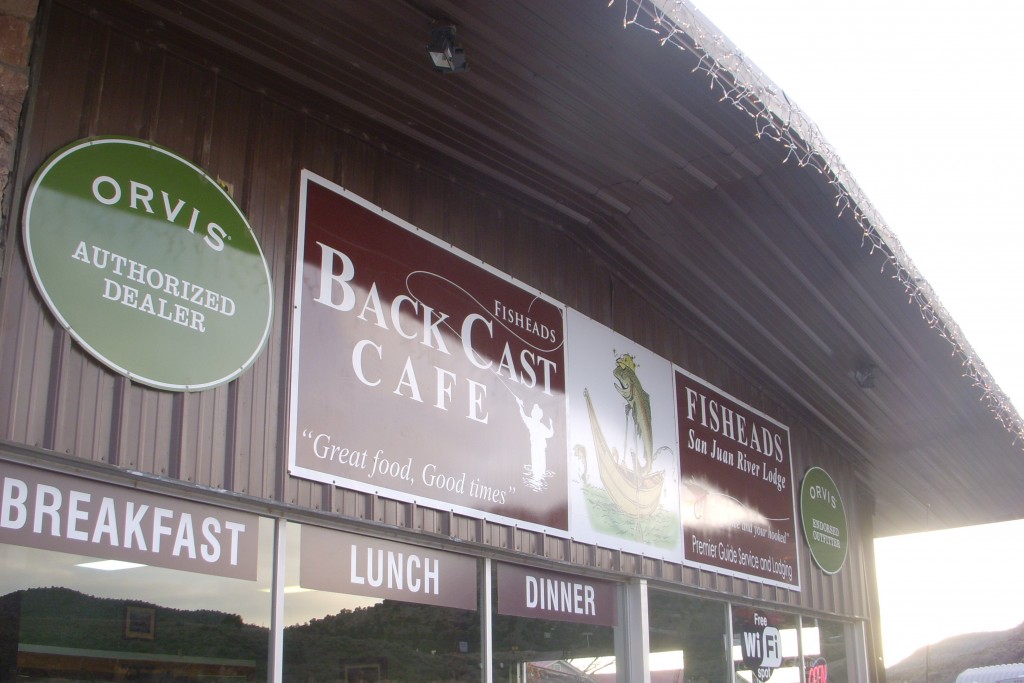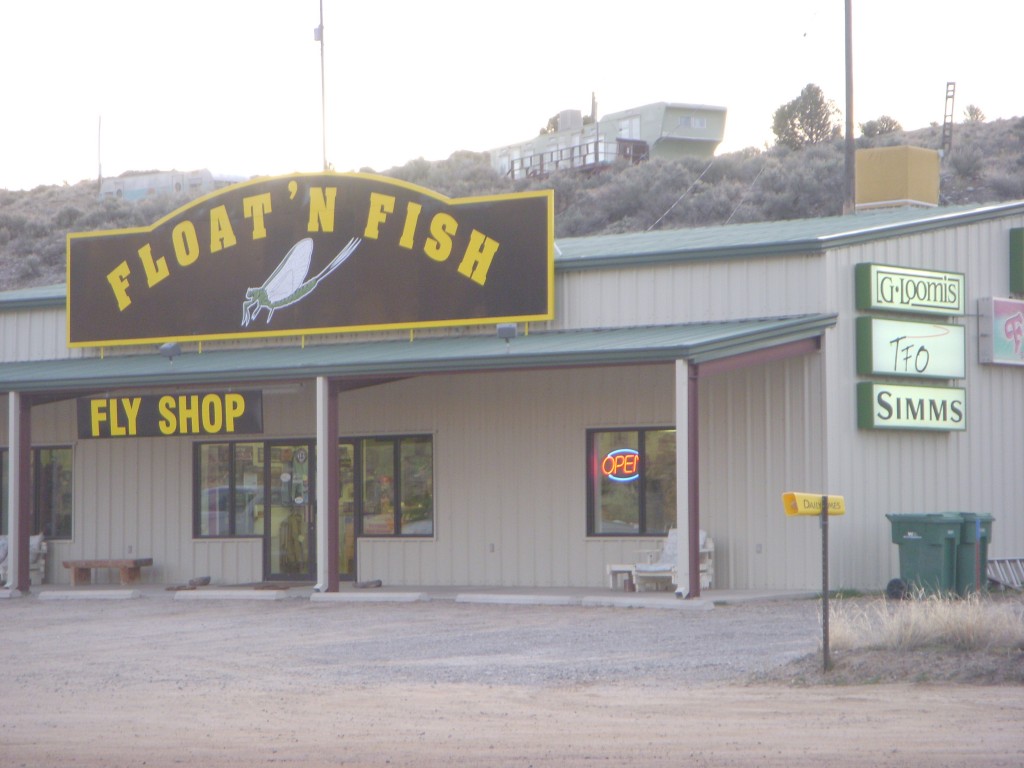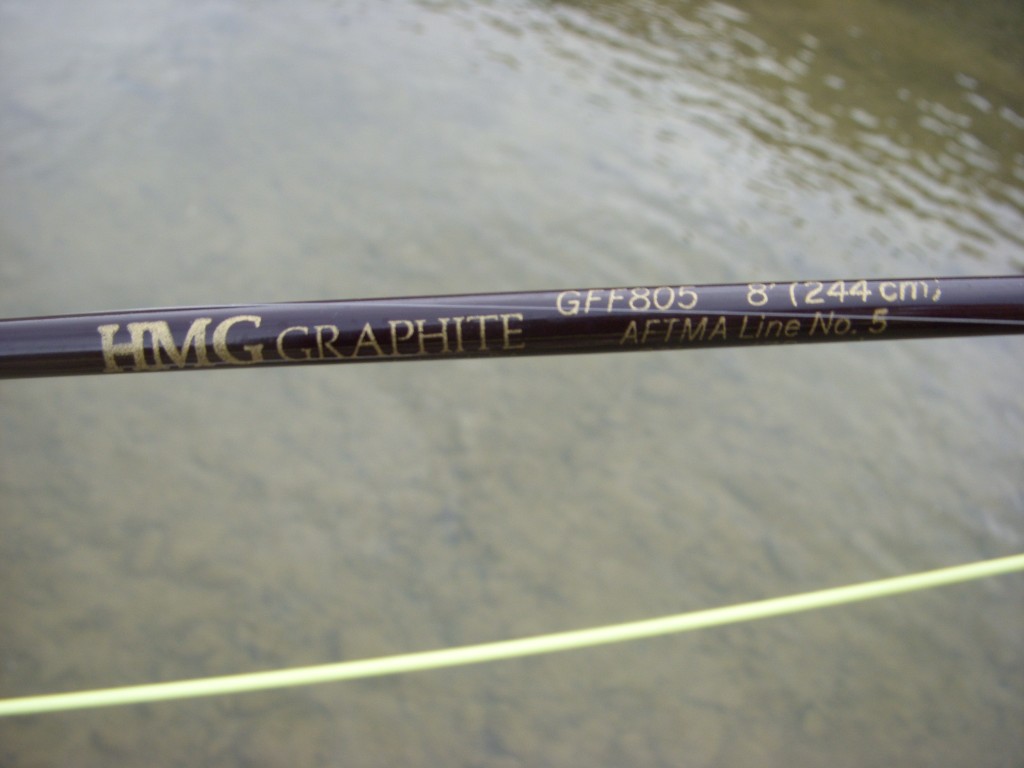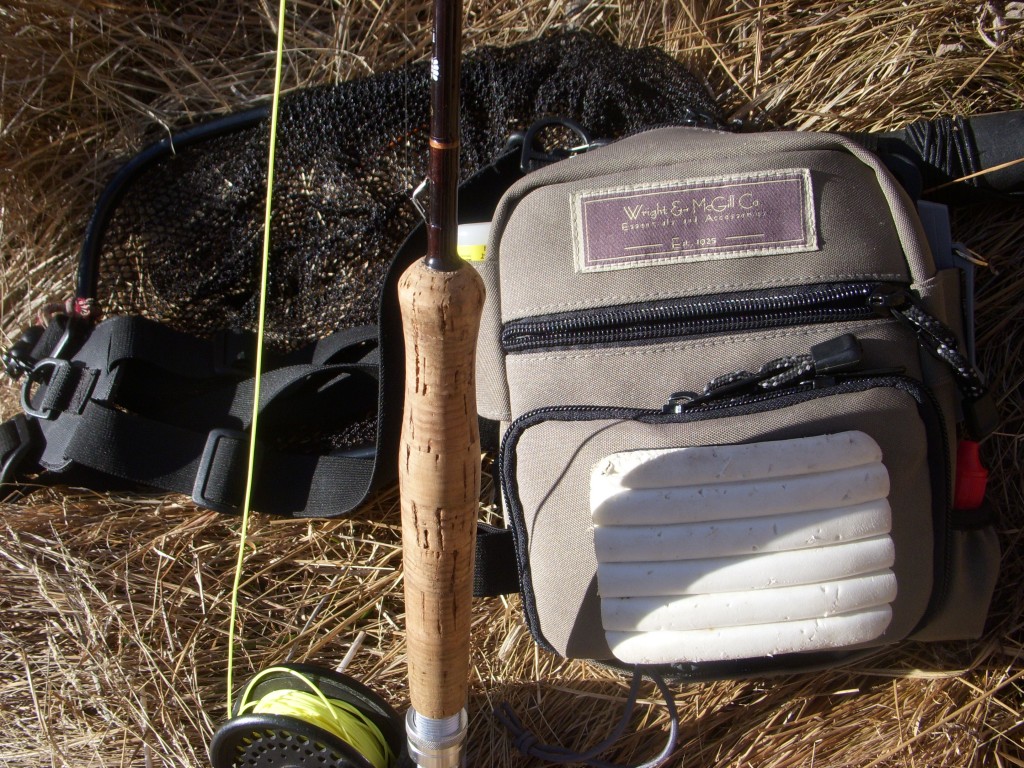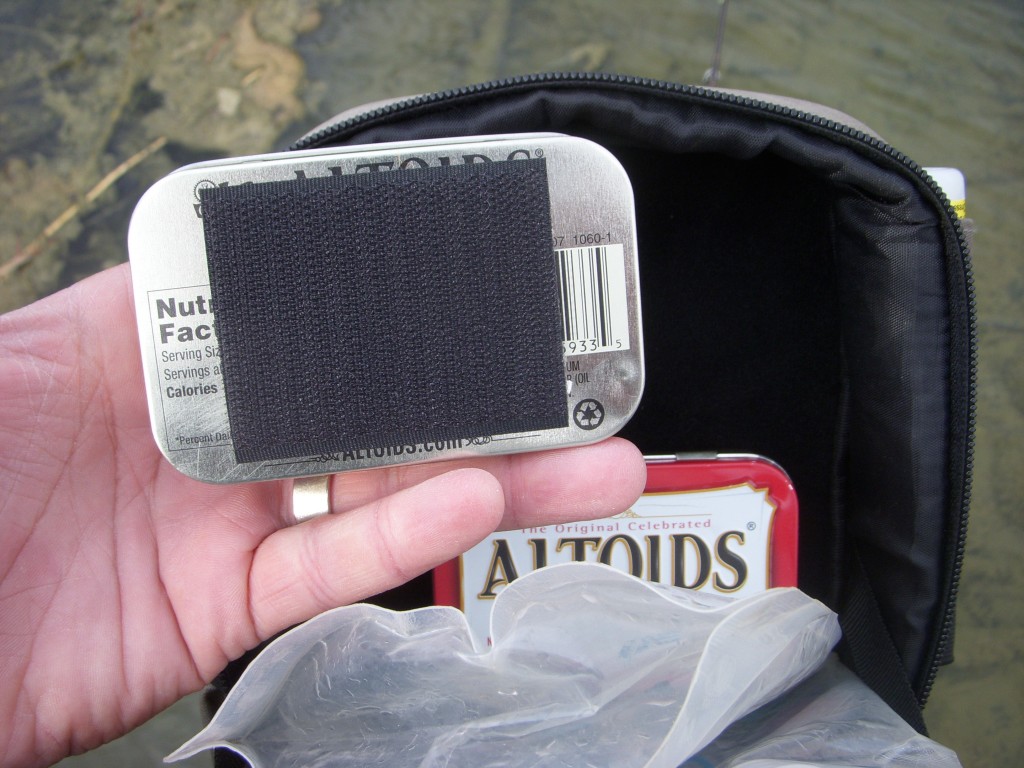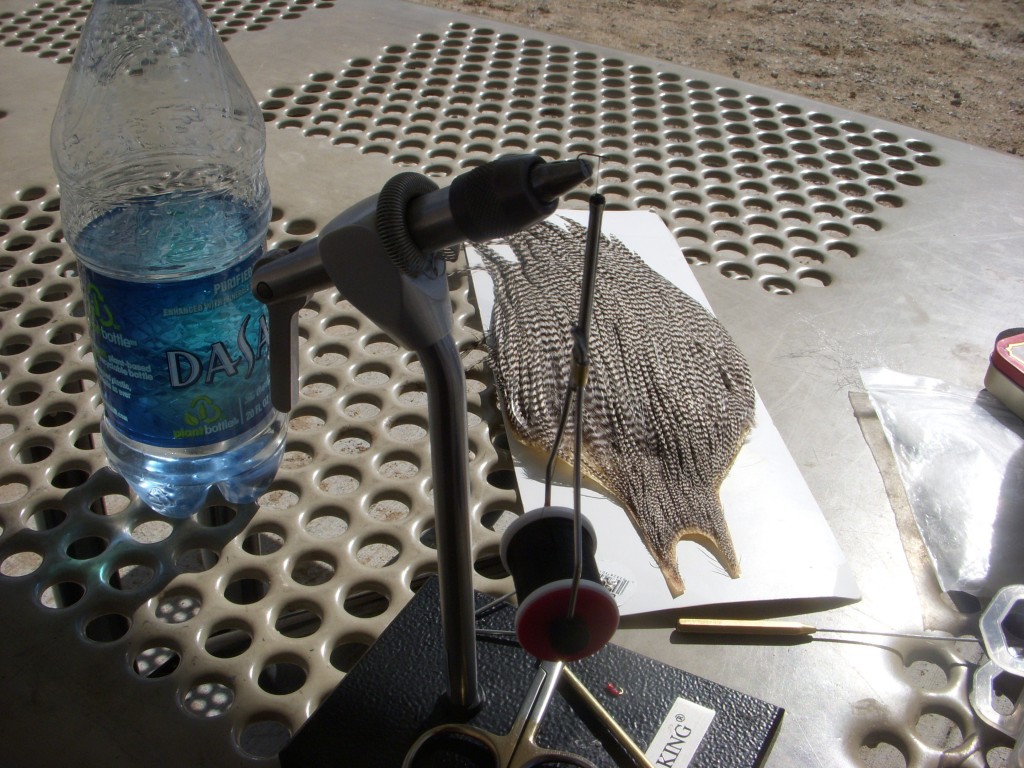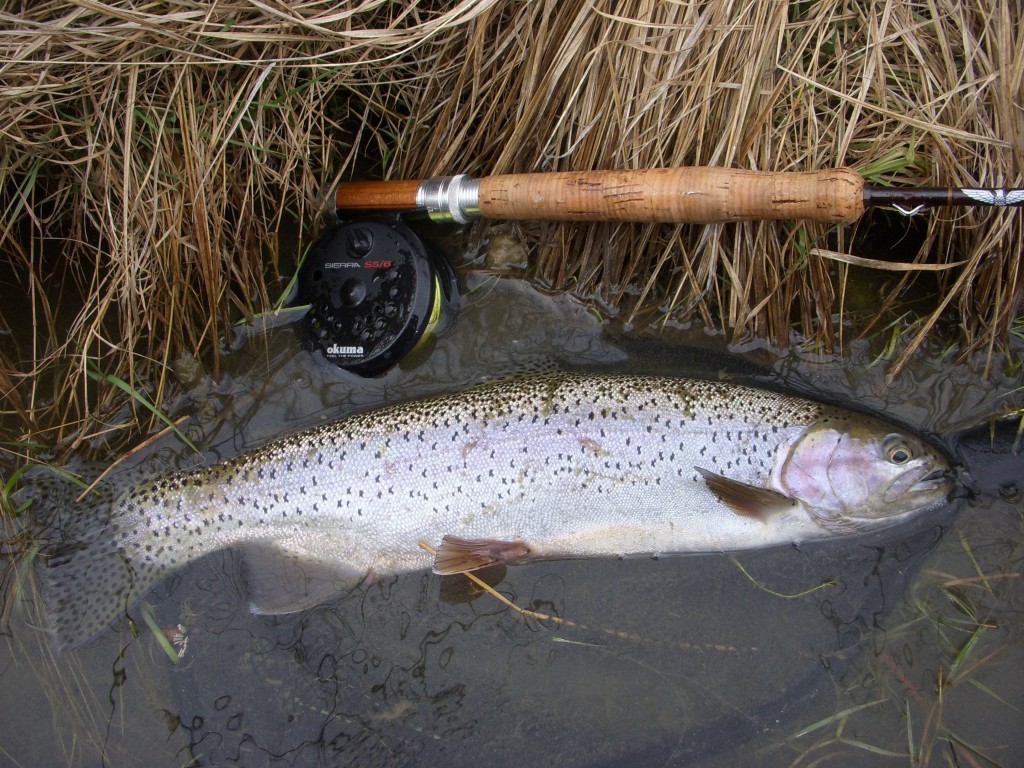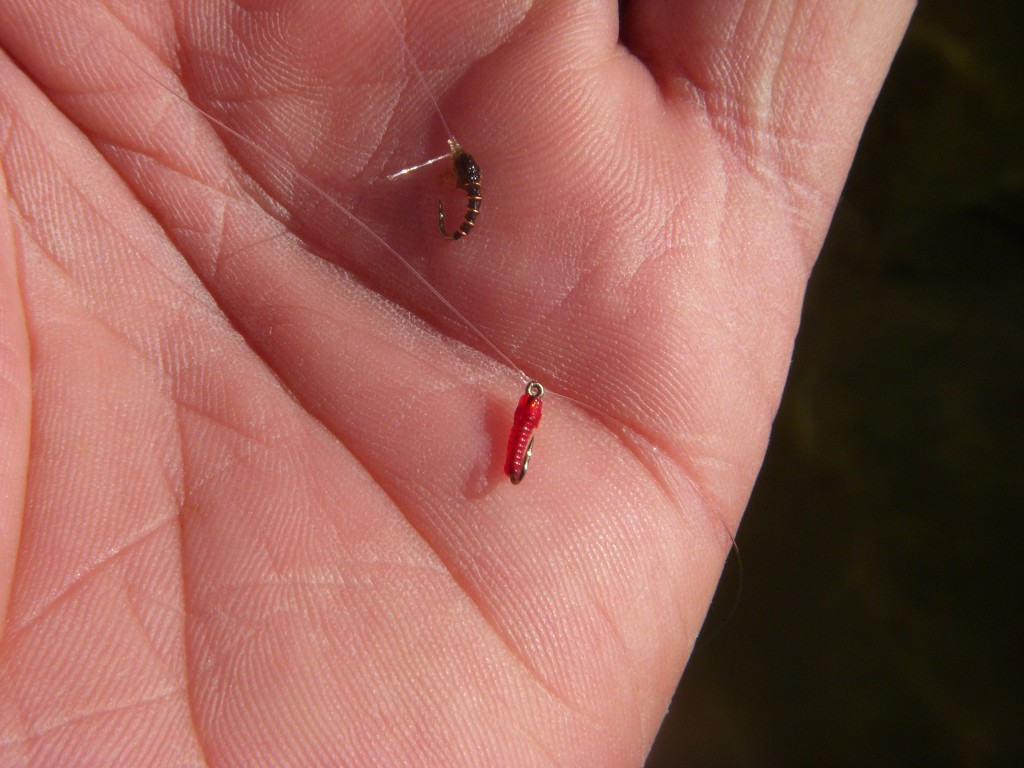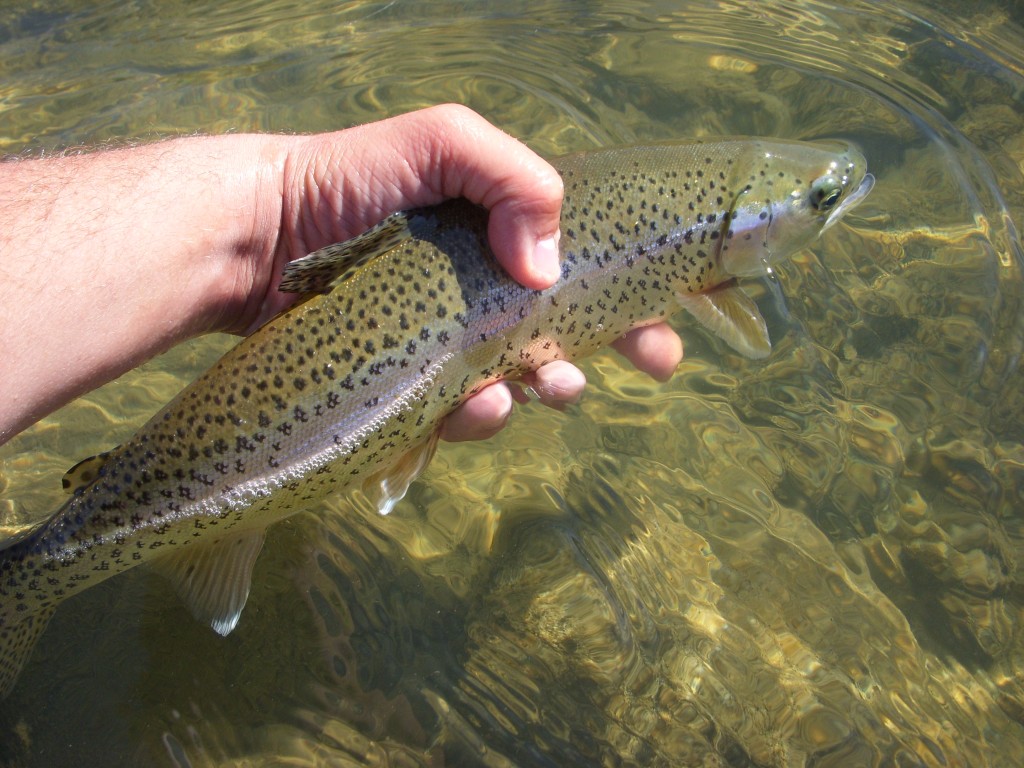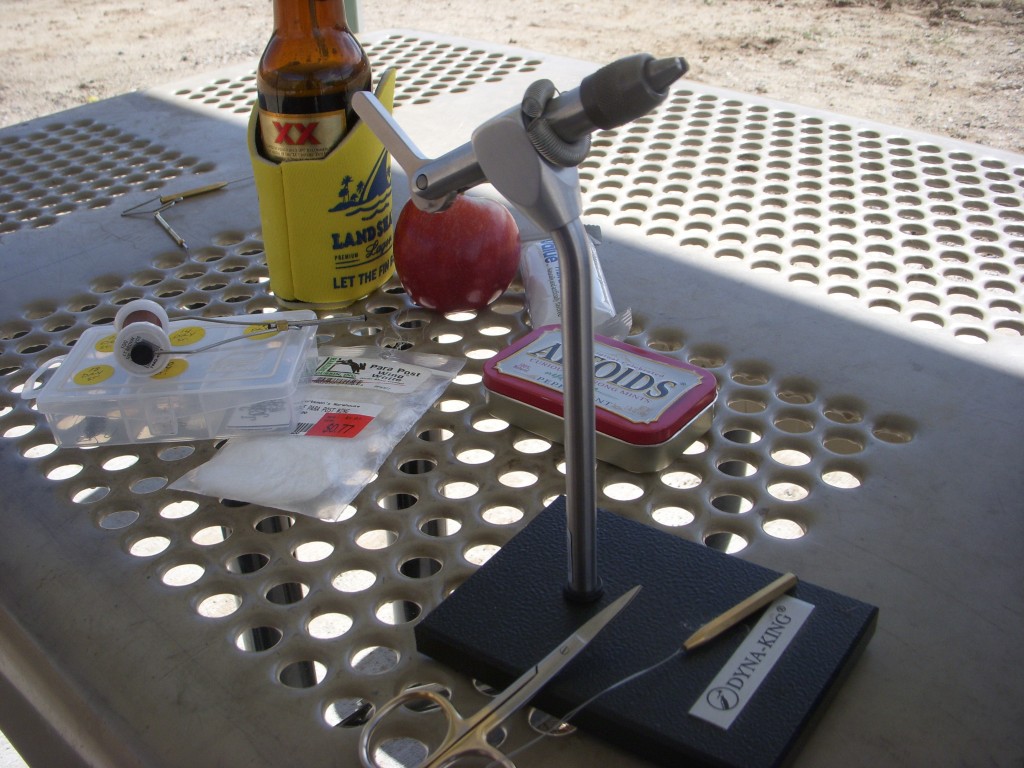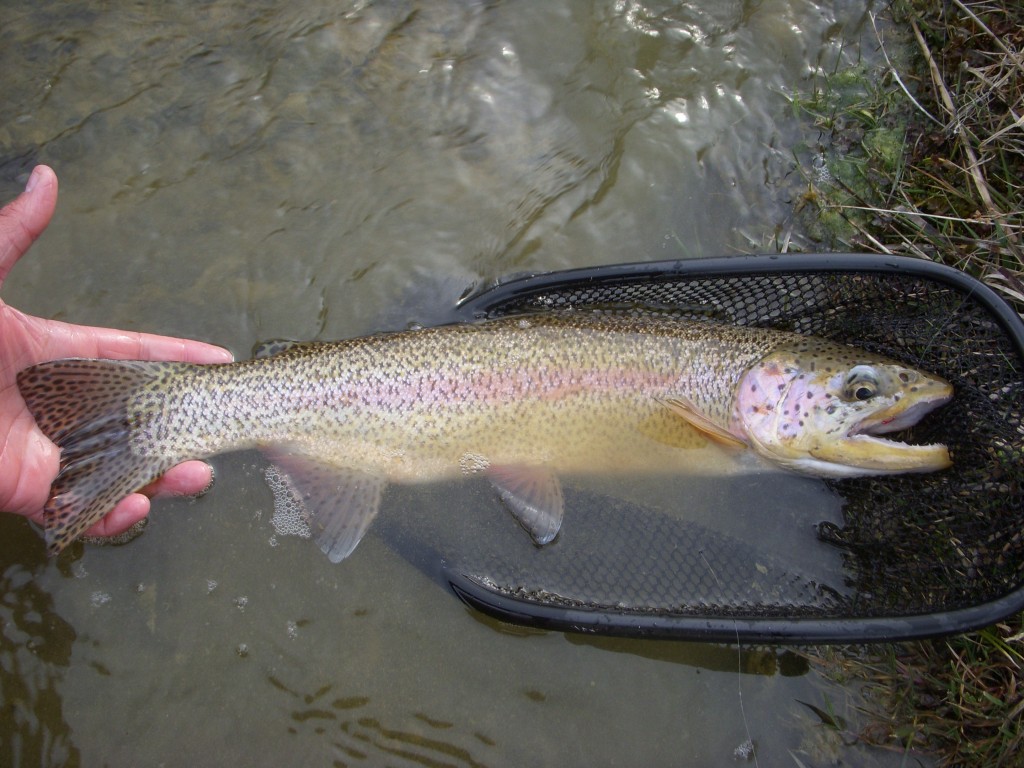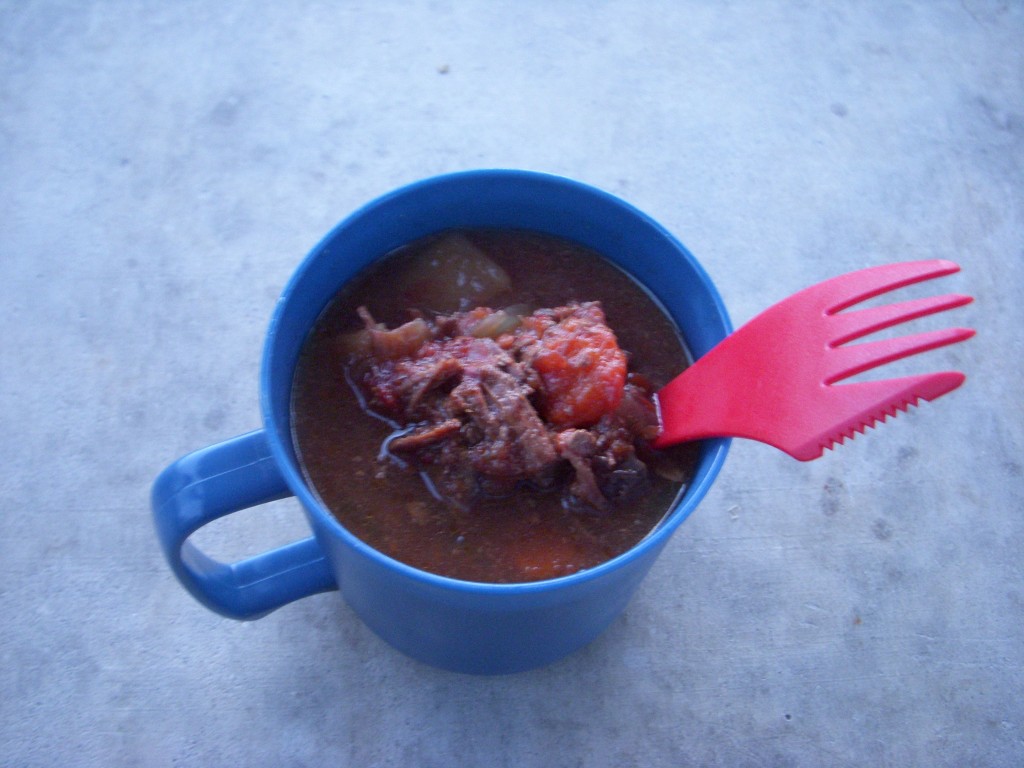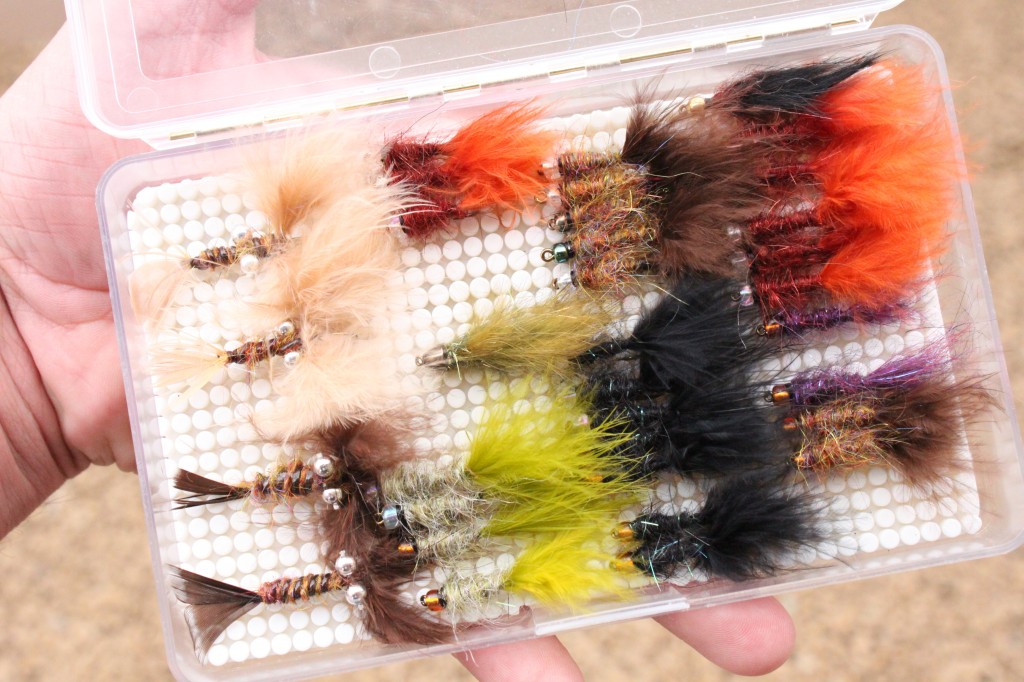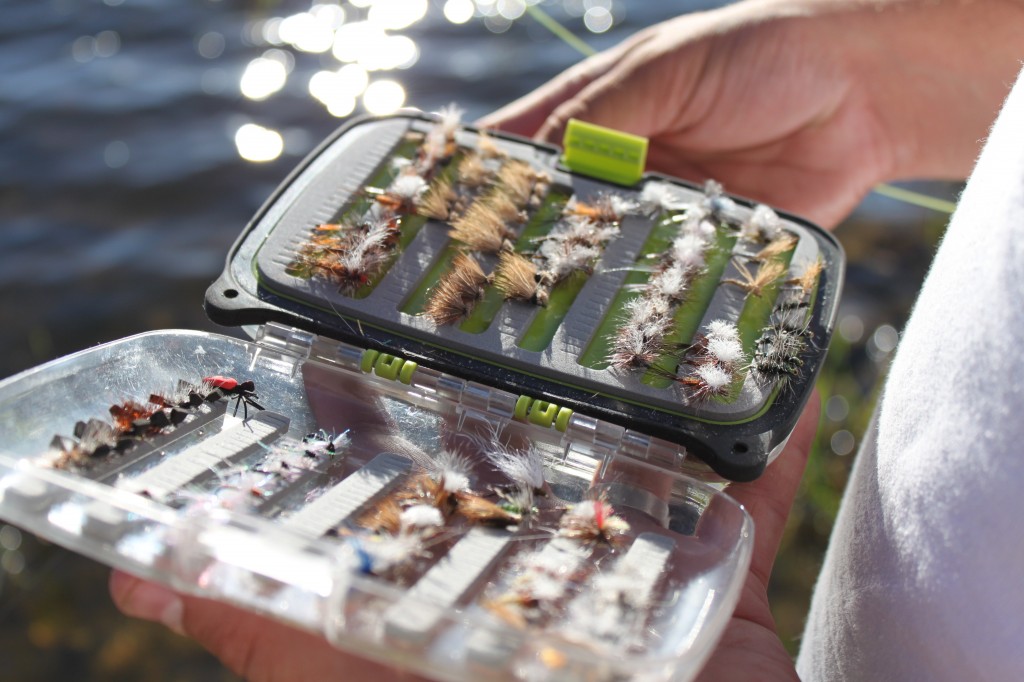Rambling Review – Fisknat Landing Nets by Bob Nelson
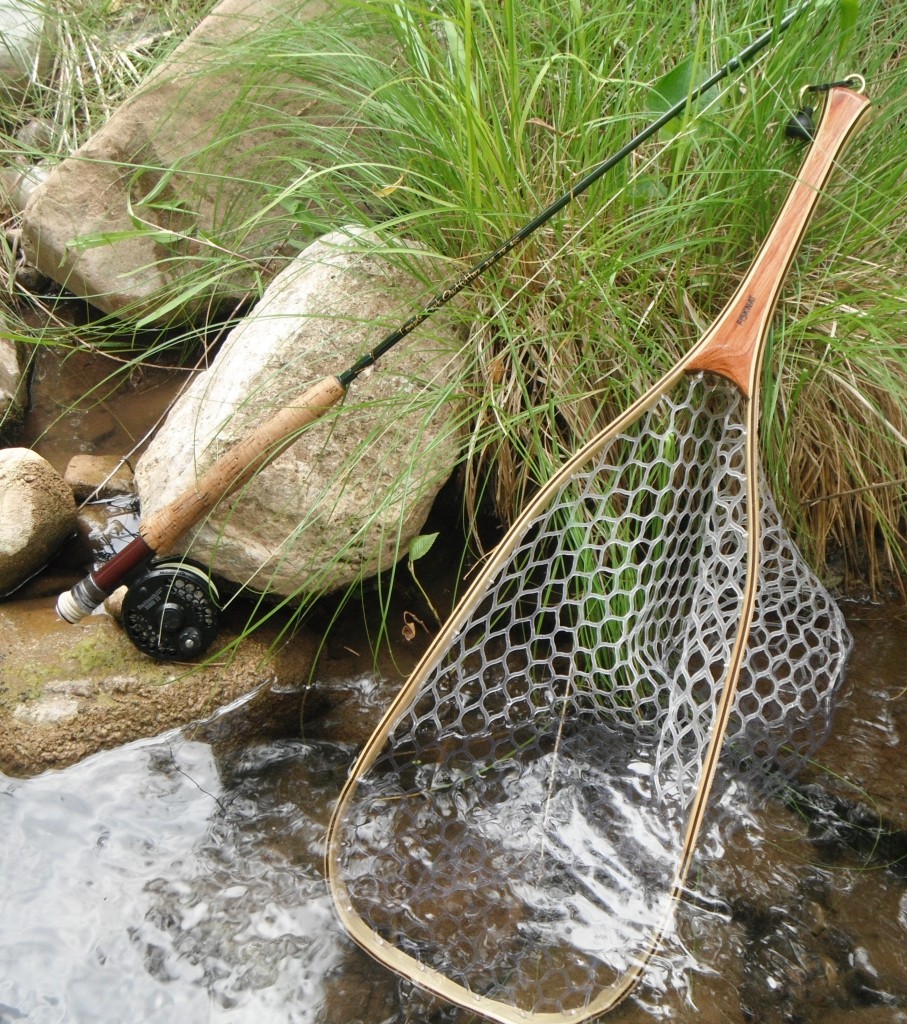
Why:
A landing net becomes an intricate part of a fly fisherman’s tools, especially when there is lunker on the other end of the line. Having a quality net as part of your gear is a necessity and Bob Nelson has a great line-up of handcrafted landing nets to choose from. After a bit of debate, it was decided that the San Juan Model would be a great net for my neck of the woods.

First impressions:
The Look – This net has a real classy look with the bow being constructed of ash and walnut while the handle is fashioned from bubinga wood. The San Juan style net has a long sleek look, that with the different choice of woods, is really appealing to the eye.
Dimensions – The San Juan Net has an overall length of 27″ with a bow of 9×18″. This is a great net for some of the bigger streams and rivers here in the Southwest.
Rubber Net – The more I learn about and use the rubber nets, the more I love it. The newer style of rubber netting that is being used on modern nets has some really great advantages. No more are my hooks getting hopelessly lodged into the old standard mesh netting, which would leaving me sitting on the side of the stream anxiously trying to untangle the mess I created. The science behind the rubber netting claims that the rubber net is less harmful to the protective coating on fish than the older knotted mesh style net.
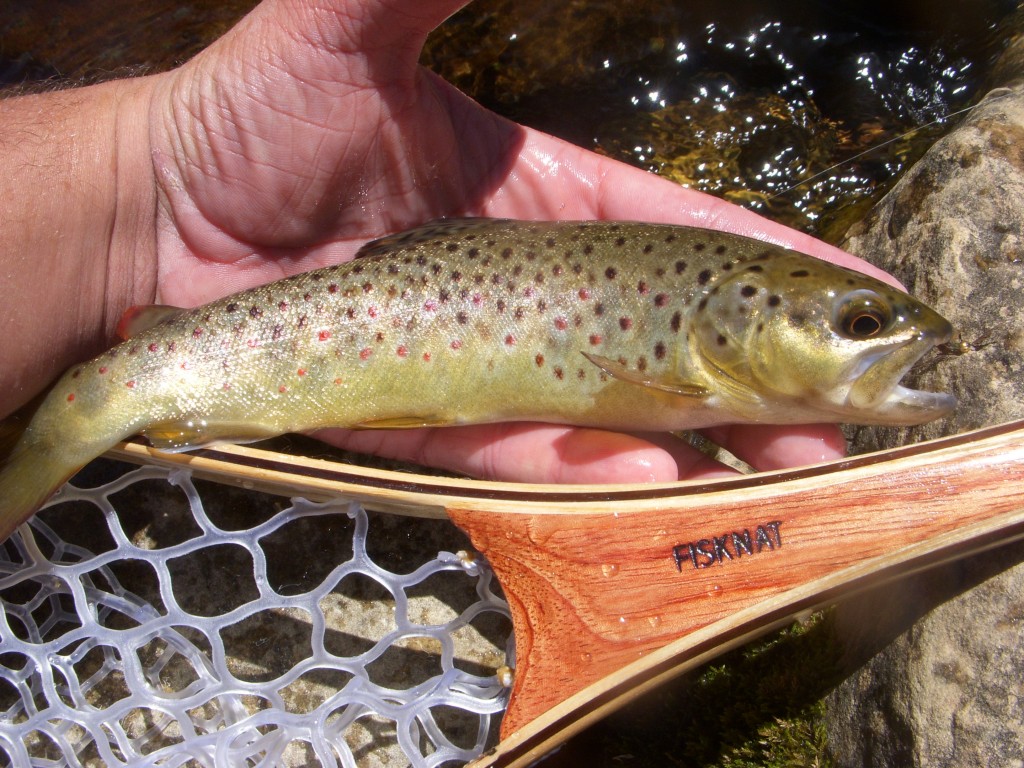
Field Use:
I have had some really nice times toting the Fisknat San Juan style net around the hills and ponds of Arizona. One of the more memorable times was a 3 day trip into some of the backcountry creeks on the Mogollon Rim chasing the trifecta of trout. With the Fisknat net strapped to my pack, I hiked down into a couple of canyons in search of big Arizona browns. While I did not catch my monster, several nice Arizona browns made their way into this net.
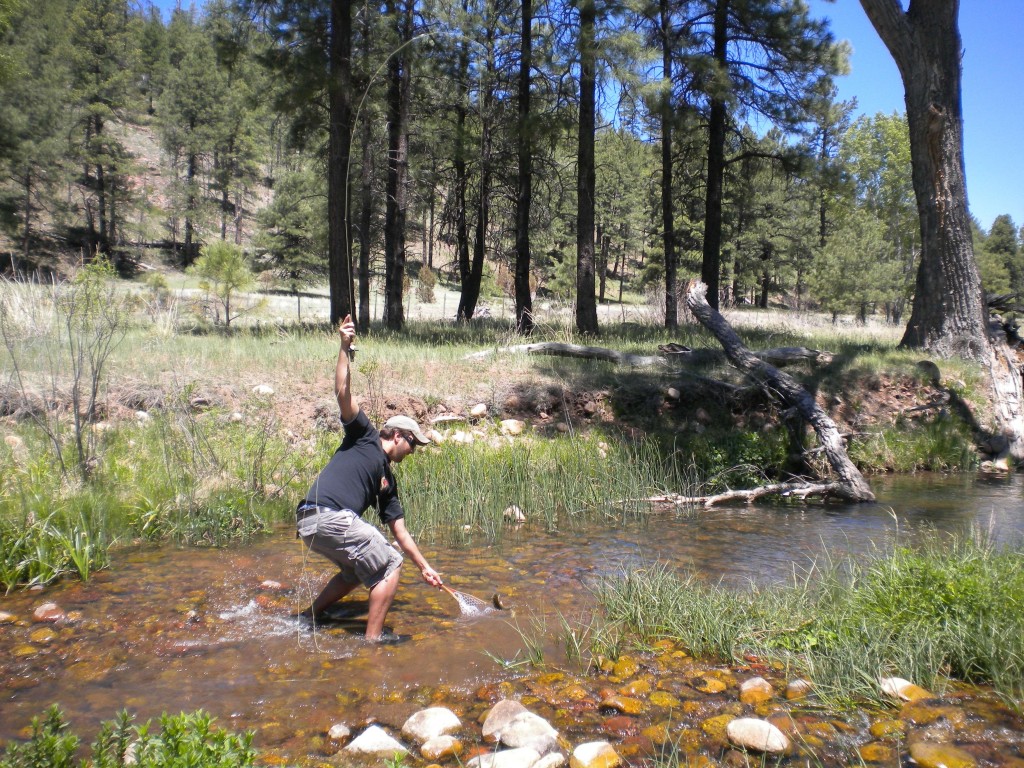
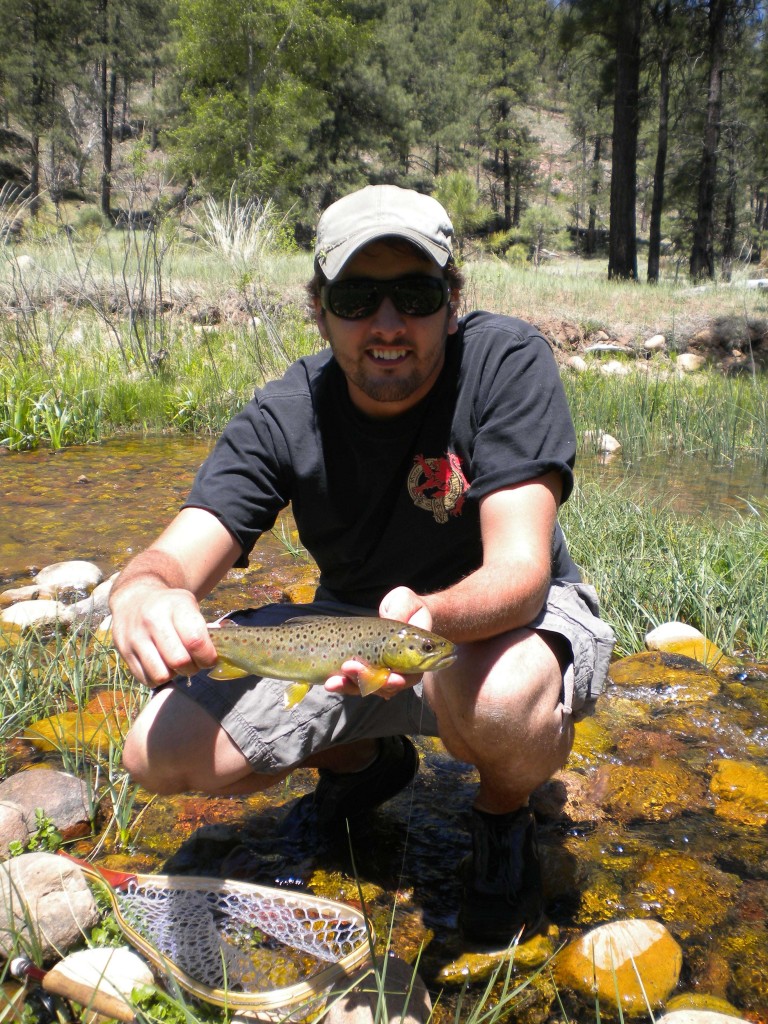
I can attest to the durability and ruggedness of Bob Nelsons quality craftsmanship. This net has seen some serious backcountry bushwhacking and gnarly rock scrambling in the harsh canyons or Arizona. I truly appreciate gear that will stand up to the test of hard fishing and the Fisknat net was not a disappointment.
Bob has a whole lineup of different styles of hand nets to choose from as well as pontoon/float tube specific nets and even longer boat nets. Bob’s lightweight nets are sold all over the United States by many different fly shops or you can check out his website here.
Pros:
Quality Handcrafted Construction
Fish/Hook Friendly Rubber Net
Wide selection of styles
Light Weight
Durability and Ruggedness
Made in the USA
It floats (I may or may not have lost a net in deep water…)
Cons:
There are definitely cheaper nets on the market, but you get what you pay for.
Prognosis: I highly recommend checking out Fisknat’s lineup of nets as there is something there for everyone. High quality product that will last a lifetime.

* Disclaimer:
The reviews at Arizona Wanderings are my honest opinion. This net was provided by Fisknat for the purpose of this review. My independent status may change in the future but, as of the date of publication, no relationship other than described above has been pursued or established.



